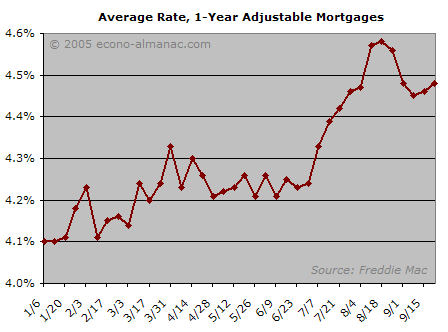Governments like a little bit of inflation. Inflation basically acts as hidden tax, allowing the government to run up a lot of debt and then sit back while that debt is inflated away. What governments avoid like the plague are increasing expectations of inflation. When the populace starts to feel that inflation is rising, business owners preemptively raise prices and consumers start bidding prices up by buying more now to avoid increased prices later. The resulting price increases reinforce the public perception that inflation is on the rise, which only encourages more price-increasing behavior, and the cycle continues.
This is exactly the scenario that was playing out in the United States in the 1970s and early 1980s. Fed chairman Paul Volcker finally pulled us out of the inflationary spiral by raising the Fed funds rate so high that it became very tempting to save money and prohibitively expensive to borrow it. The resulting slowdown in spending caused a severe recession, but the inflation cycle was broken. Volcker was burned in effigy on the Capitol steps by idiots who couldn’t understand that he’d done the right thing, if the difficult thing, and saved the dollar.
Since that time, the Fed’s main mission has been to keep inflation expectations under control.
Why the esoteric slog through the economics of inflation expectations? Because it may be relevant, as inflation expectations are headed upwards. According to the University of Michigan’s latest Consumer Confidence Survey, Americans are expecting prices to rise by 4.6% over the next year. This is a huge leap from the August survey, which forecast 3.1% inflation over the coming year. Expectations of longer-term inflation (over the next 5-10 years) also rose from 2.8% in August to a four-year high of 3.1% this month.
The spike in expected inflation is clearly due to hurricane-related energy price increases, so it’s possible that these expectations will wane in the coming months if energy prices settle down. However, inflationary pressures have been building since 2004, and that reality may finally be settling into the collective consciousness. Either way, you can be fairly sure of one thing: nobody likes being burned in effigy. The Fed does not want to allow inflationary expectations to get out of control again, so I wouldn’t expect Greenspan et al to stop tightening until those expectations head back down.
Long-Term Rates
Long rates, as represented by rates on 30-year fixed interest mortgages, remain in the middle of the past year’s range:

This means that they are neither helping nor hindering the housing market at this time. It is interesting to note that rates have moved up consistently since Katrina hit. It may be more bouncing around in the trading range, but it may also be that the bond market, like the University of Michigan survey subjects, is starting to get a whiff of inflation fear. This would be a bearish development for long term bonds, given that their rates have been held down by a fairly entrenched expectation of low inflation.
Short-Term Rates
The rates on 1-year adjustable mortgages aren’t as high as they were last month, but they are quite a bit higher than they were back in June:

There are some good reasons to believe that short-term rates could go up even further. As cynical as I am about the Fed’s concern with actual inflation, I believe they want nothing more than to keep inflation expectations under wraps. So as I discussed at the beginning of the article, America’s newfound inflation awareness will likely induce the Fed to keep hiking in the near term.
Additionally, Greenspan has been making a lot of noise about the housing bubble lately. As you will recall from last month’s credit market report, he recently made the rather stunning declaration that the Fed is increasingly looking at asset prices (i.e., home prices) while forming their policy. He followed that up this month with a lengthy speech about America’s buildup of mortgage debt. While the speech didn’t contain any threats of policy reaction, I believe the continued attention he has given the housing market indicates that the Fed is finally at least concerned with the risks of excessive speculation therein. Whether this concern translates into policy, especially considering that Greenspan is out in January, remains to be seen. It’s worth keeping an eye on, though.
Away from the Fed, private mortgage companies are doing a little tightening of their own. According to the LA Times, subprime powerhouse New Century Financial has announced that, due to decreasing demand in the secondary mortgage market, New Century will both raise rates and decrease the number of interest-only loans that it writes. The article points out that other lenders have made similar announcements as well.
I’d be remiss not to mention the recent news that Fannie Mae’s finances are even more of a mess than previously anticipated. However, I don’t really see these Fannie-related revelations as as having a big effect on the housing market itself. Ever since the scandals started to break, the GSEs have taken a back seat to the private lenders in expanding mortgage availability. Most of the liquidity is coming from the secondary mortgage market at this point, so that’s where we really should focus our attention. If demand is declining there, it doesn’t bode well for rates… and demand appears to be doing just that.
Conclusion
As far as the San Diego housing market is concerned, rates on adjustable mortgages are much more important than those on long-term fixed rate mortgages, for the simple reason that a large majority of San Diego home purchases are made using ARMs. A continued climb in short-term rates would be a very ominous development for San Diego housing. As I apparently never tire of mentioning, San Diego home prices are kept aloft by E-Z credit… the end of E-Z credit will mean the end of the San Diego housing bubble.
